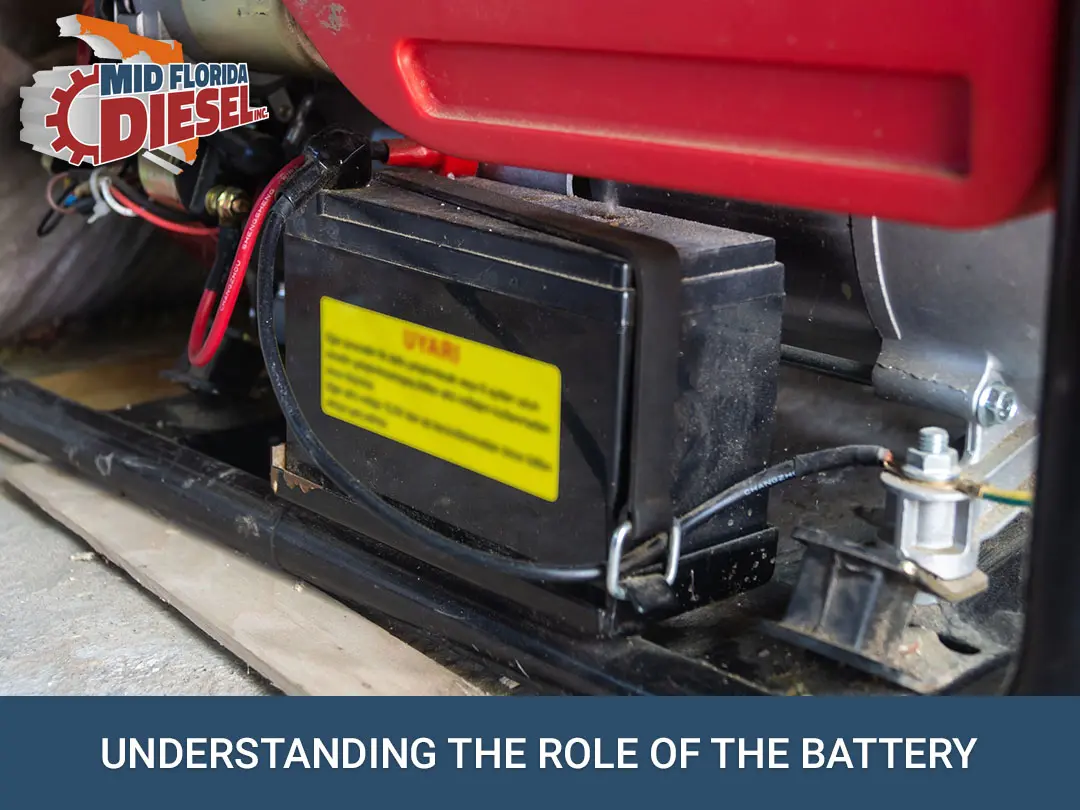
For many property owners and businesses across Florida, a diesel generator serves as a reliable backup power source during storms, power outages, and other emergencies. To ensure this system operates when needed, consistent generator maintenance is required. While many focus on the engine, fuel system, or transfer switch, the battery often receives less attention. Yet, it serves as the power source that starts the generator. Even the most advanced generator cannot perform as expected without a properly functioning battery.
A generator battery typically provides the initial electrical current that starts the engine. Once the engine runs, it powers the alternator, which then charges the battery for future use. If the battery is weak, corroded, or poorly maintained, the generator may fail to start at a critical time.
The Impact of Neglecting Battery Care
If you don’t maintain your battery, you may encounter several avoidable problems. Batteries lose their charge over time, especially in hot or humid places like Florida. High temperatures can accelerate chemical reactions inside the battery, causing it to break down more quickly. Corrosion at the terminals, loose connections, or fluid leaks can also stop the flow of electricity.
If we don’t fix these issues, the generator won’t function as well. When the power goes out, a unit that won’t start can halt operations, damage property, or incur significant costs. Regular maintenance helps prevent these issues by identifying and addressing minor problems before they escalate into larger ones.
Testing for Performance and Longevity
Owners can accurately check the condition of a battery by testing it regularly. The first step is to look at it. Look for signs of corrosion, leaks, or swelling around the terminals. You can remove buildup and improve the terminals’ performance by cleaning them with a mixture of baking soda and water.
Another vital part of regular checkups is checking the voltage. A fully charged 12-volt battery should read approximately 12.6 volts when not in use. If the reading is much lower, it could mean that the battery isn’t holding a charge well. Load testing can also demonstrate how well the battery performs in real-world situations. If the battery struggles to maintain its voltage during testing, it may need to be replaced.
Establishing a Maintenance Schedule
Taking care of batteries well means being consistent. A structured maintenance schedule ensures that tests, cleanings, and inspections occur regularly. Depending on the environment and the frequency of use, many experts recommend checking the generator once a month or every three months. More frequent inspections can help identify problems early in areas where humidity or temperature fluctuations are significant.
Documentation should also be part of maintenance schedules. Keeping track of the date, voltage readings, load test results, and any repairs made gives you a clear history of maintenance. This information is helpful for future repairs and ensures that the warranty is followed.
Recognizing When to Replace a Battery
Even if you take excellent care of them, all batteries will eventually lose their charge. Most generator batteries last 2–5 years, depending on how they are used, stored, and maintained. If your engine cranks slowly, your indicator lights are dim, you frequently need to reset it, or your test results are deteriorating, you may need to consider a replacement.
It’s always better to replace something before it breaks than to wait for it to break. Changing the battery during regular generator maintenance reduces downtime and ensures the generator is ready for a storm or power outage. When choosing a replacement, ensure it meets the manufacturer’s requirements for voltage, capacity, and size to ensure proper operation.
Best Practices for Long-Term Care
There are a few simple steps you can take to extend the lifespan of a battery and increase the reliability of a generator. Corrosion is less likely to happen if you keep the battery clean and dry. Ensuring that the connections at the terminals are secure helps maintain steady power flow. Placing the generator in a covered or climate-controlled space can help slow down battery degradation by protecting it from extreme temperatures. A trickle charger or battery maintainer can keep the battery fully charged without overcharging it when it’s not in use for an extended period.
Additionally, including battery checks in general generator maintenance ensures that no part is overlooked. Taking care of the battery, a key part of the system, helps it function better and reduces the likelihood of unexpected failures.
Bringing It All Together
Taking care of the battery is a crucial part of generator maintenance that has a direct impact on its performance and reliability. Florida property owners and businesses that rely on a diesel generator during power outages can ensure the system will function properly when needed by regularly testing, cleaning, and replacing it. Owners can reduce the likelihood of startup failures, extend the lifespan of their equipment, and safeguard their investments by paying attention to this often-overlooked aspect.
For professional assistance with battery maintenance, testing, and replacement as part of your broader generator service strategy, consider working with Mid Florida Diesel to keep your system prepared for any situation.
Picture Credit: Depositphotos
